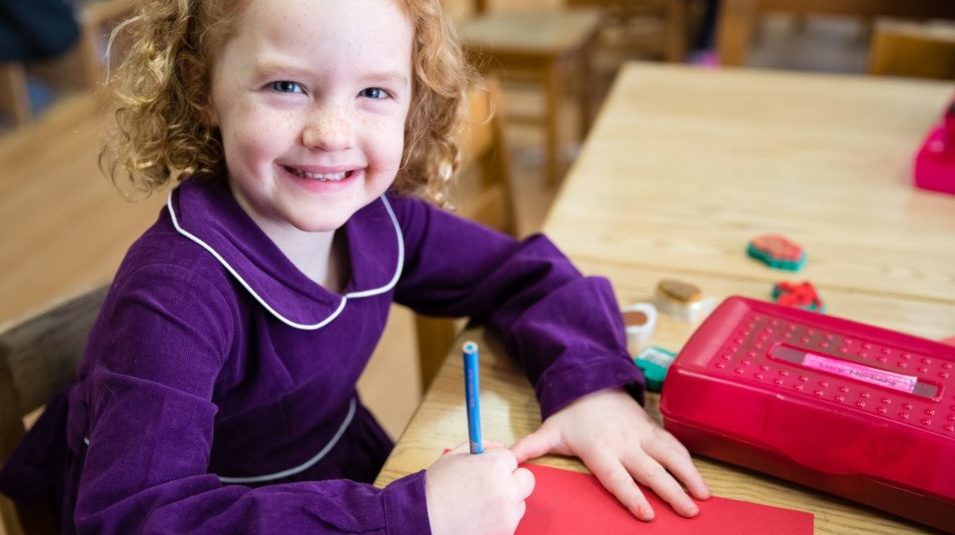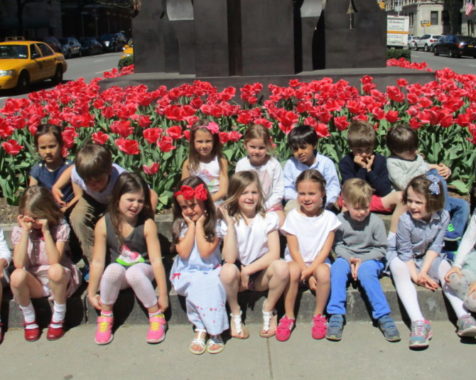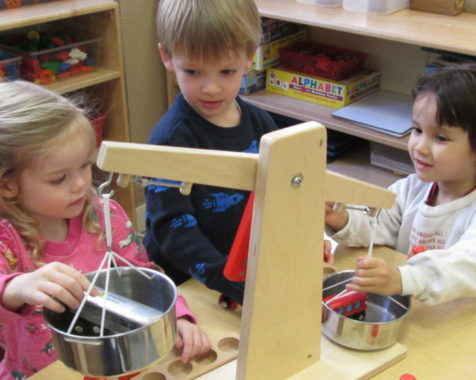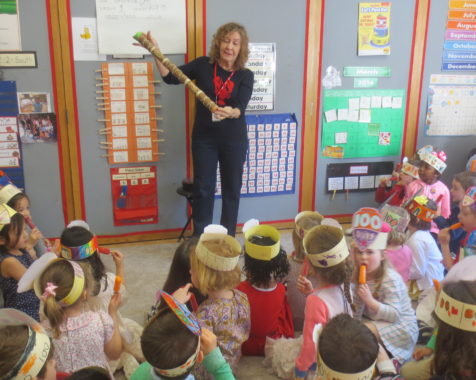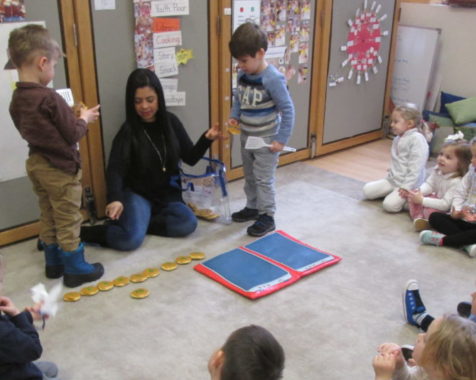Language Arts is integrated across the curriculum throughout the school day. Teachers promote the use of language as an integral accompaniment to play, routine chores, as well as in special learning experiences. Teachers employ verbal strategies that create optimum communication opportunities and facilitate the child’s participation in interactive verbal expression. During group meeting times, children learn to express ideas and to listen to the ideas of others. Puppets are sometimes used to dramatize situations. As children play during activity time or outdoors, teachers are on hand to help children communicate their thoughts, needs and feelings (e.g. who will play what roles, what to do next, or settling disputes).
Teachers provide print-rich environments in their classrooms through experience charts, graphs, posters and book centers with a wide selection of fiction and non-fiction books. The book centers may also include books written by the class as well as books created by individual students and teacher made books. Word recognition skills develop as children learn to identify their own names and those of classmates on such things as attendance and job charts, cubbies and ‘mailboxes,’ place mats, and displays of their artwork.
Story time is an important part of every school day. Students are encouraged to listen and recall the main idea and parts of the story, predict logical story conclusions, and sequence the events of the story. Children visit the School’s library once a week and select two books to take home. The library is run by parents.
Storytelling is provided on a regular basis to each class by its teachers and also by the Storytelling Specialist. Children are encouraged to act out the story and to create their own stories, which can be dramatized. Flannel boards and puppets, costumes and props are sometimes used to help children in these efforts.
Writing is encouraged through the creation of class books and the dictating of children’s own stories, which they can then illustrate. We use aspects of a curriculum called Handwriting Without Tears. Centers include a variety of materials to provide children additional opportunities to write labels, signs, lists, notes and/or correspondence to friends and family. The dramatic play area may include paper pads and pencils for pretend phone messages, shopping lists, doctor’s prescriptions, etc.
The teaching of beginning letter sounds through games, manipulatives and other classroom activities is provided for four and five year olds. Visual and auditory discrimination activities are a part of every class’s language arts curriculum. These include games and materials for free choice and teacher directed activities. For teaching letter sounds, we have been using aspects of a curriculum called Sounds in Motion which includes hand motions to go with letter sounds.
The goal of our curriculum in this area, as in all areas, is to provide children with the support and opportunities they need to develop skills and progress to the next level. The wide range of development in young children means that some of our students work at mastering the ability to hear and produce rhymes, while others begin reading to decode and encode CVC words or beyond. While most are successful developing some understanding of the relationship between letters and their sounds in the four’s and five’s classes, children who are not ready are not pushed.
